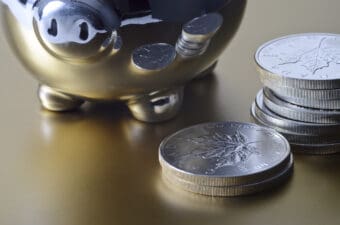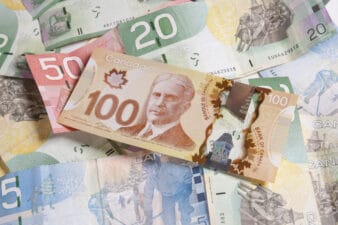Dividend stocks can be terrific sources of income for your portfolio. Take a stock like BCE Inc (TSX:BCE)(NYSE:BCE) for instance. The stock is currently paying a quarterly dividend of $0.8325, which currently yields around 5.9% annually.
It’s a fairly high yield, especially for a safe blue-chip stock like BCE. What makes the dividend stock an even better buy is that it routinely increases its payouts as well.
If we go back three years ago, BCE’s quarterly dividend was $0.7175. Since then, it’s gone on to increase by more than 16% since then, which averages out to a compounded annual growth rate of more than 5% per year. The benefit for investors is that over the long term, they’ll be earning more on their initial investment.
If BCE continued that rate of increase, it would take less a bit less than 15 years for its dividend payments to double. Not only do you get paid more, but with an increase of 5% per year, it’ll likely offset the rate of inflation as well.
How inflation can chip away at your returns
Let’s assume you didn’t invest in a stock like BCE and instead owned shares of a dividend stock that paid 5% today, but never increased its payouts. Here’s the impact of your dividend (after inflation) over the years, assuming that inflation stays constant at 2% per year:
| Dividend Yield | |
| Today | 5.00% |
| Year 1 | 4.90% |
| Year 2 | 4.80% |
| Year 3 | 4.71% |
| Year 4 | 4.61% |
| Year 5 | 4.52% |
| Year 6 | 4.43% |
| Year 7 | 4.34% |
| Year 8 | 4.25% |
| Year 9 | 4.17% |
| Year 10 | 4.09% |
| Year 11 | 4.00% |
| Year 12 | 3.92% |
| Year 13 | 3.85% |
| Year 14 | 3.77% |
| Year 15 | 3.69% |
| Year 16 | 3.62% |
| Year 17 | 3.55% |
| Year 18 | 3.48% |
| Year 19 | 3.41% |
| Year 20 | 3.34% |
After 10 years of inflation, your inflation-adjusted dividend yield would be closing in on 4%, nowhere near the 5% when you first bought the stock. And by the end of year 20, the yield would be just over 3.3%.
While inflation numbers can and will vary, the point is to show dividend stocks that don’t increase their payouts aren’t nearly as appealing for long-term investors as stocks that increase their payouts are.
With BCE, the stock’s been increasing its payouts at a higher rate than inflation and investors would effectively be seeing their inflation-adjusted dividend rate increase over time, rather than decrease.
In that case, investors are benefiting from a real increase in their dividend income. And if you hold that investment inside of your TFSA, then all that dividend income would be tax-free.
High dividends may be enticing, but they can also be risky
Stocks that grow their dividends typically don’t have high yields that are more than 5%. However, with the markets off to a rough start in 2020, it’s led to some depressed stock prices, which is why BCE and other dividend stocks are paying a bit higher than they normally have in the past:
BCE Dividend Yield data by YCharts
Generally, stocks that pay high yields can be risky because cuts can be around the corner, and we’ve seen many dividend cuts and suspensions already this year. It’s another reason for investors to stock to dividend growth stocks.
Since they grow their payouts, they’re careful not to offer too high of a payout that can be problematic to increase over the years.
And for TFSA investors, consistency and reliability is key, which is why dividend growth stocks are far superior to stock that don’t raise their payouts regardless of the yield that they pay today.









